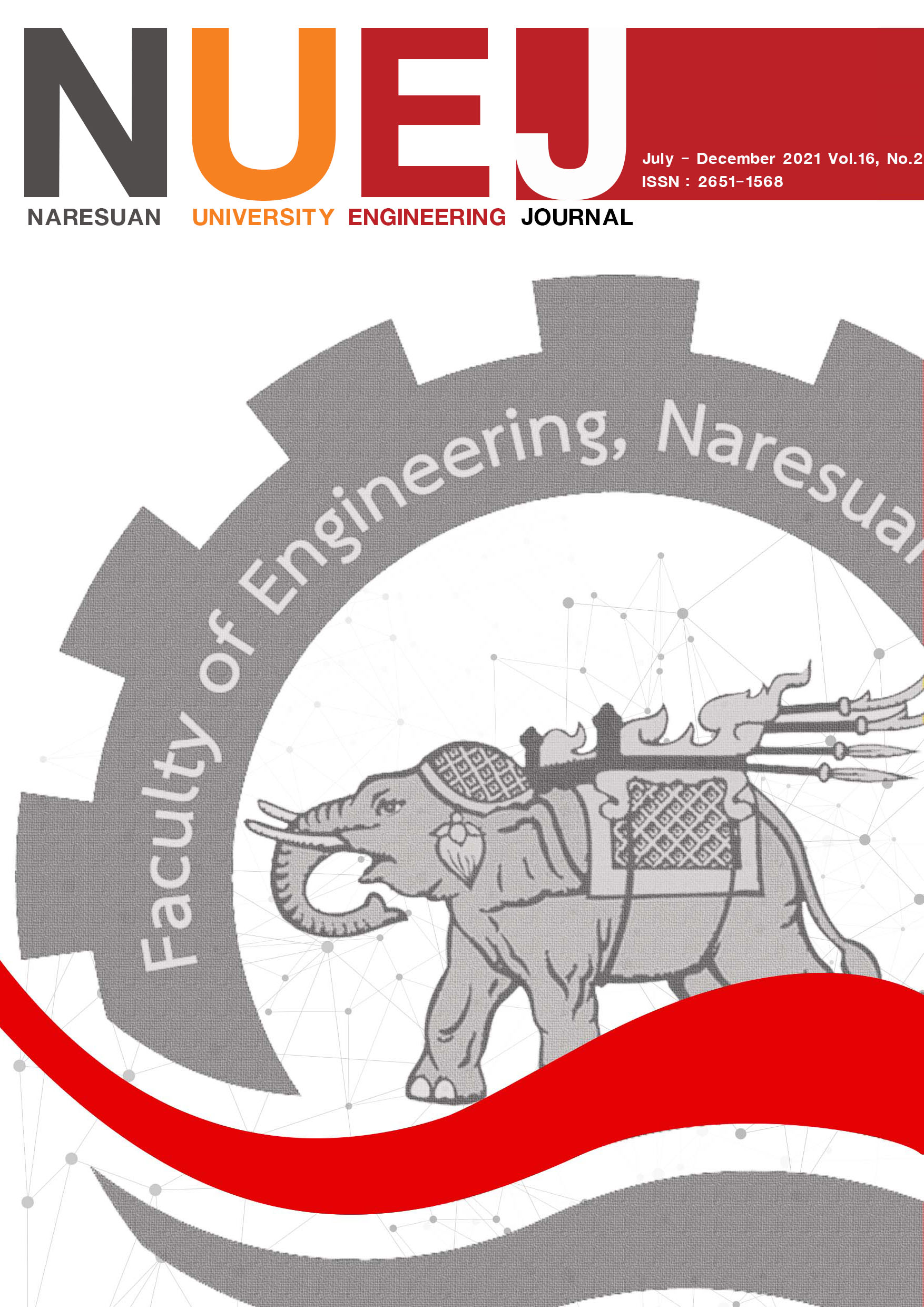Offset Prediction of an Asymmetric Force Damper on Harmonic Base Excitation Isolation System
Main Article Content
Abstract
An asymmetric force damper, commonly known as a dual-rate shock absorber, is basically designed to improve ride-comfort quality of the vehicles. The damping forces for extension and compression direction are not equal. In general, the damping force for compression is much less than that for extension. This is to absorb immediate shock caused by road input during the compression stroke and to prevent the car body or isolated mass from oscillating during the extension stroke. However, the asymmetric force damper can be found in the application of the harmonic base excitation isolation systems. This is because the damper can be easily found commercially. Such the applications, the isolated mass will be shifted and oscillating about a new equilibrium position. This occurrence may cause failure to other connected component due to misalignment. This study focuses on seeking simply analytical method in order to predict the level of offset resulting from the difference of damping forces. The analytically predicted offset is compared to the that obtained using numerical simulation. The results are all in good agreement. It found that the greater in the difference of damping force as well as the higher excitation frequency cause the greater level of offset. This information can be used prior the decision in using the automotive shock absorber in the harmonically base excited vibration isolation.
Article Details

This work is licensed under a Creative Commons Attribution-NonCommercial-NoDerivatives 4.0 International License.
References
Calvo, J. A., López-Boada, B., Román, J. L. S., and Gauchía, A., (2009), Influence of a shock absorber model on vehicle dynamic simulation, Part D: Journal of Automobile Engineering, 223(2), 189-203. https://doi.org/10.1243/09544070JAUTO990
Dixon, J. C., (2007), The Shock Absorber Handbook (2nd ed)., John Wiley & Sons Ltd, England.
https://doi.org/10.1002/9780470516430
Mahumud Niroopam Joarder, (2003), Influence of nonlinear asymmetric suspension properties on the ride characteristics of road vehicle, Master Thesis, Department of Mechanical and Industrial Engineering, Concordia University, Montreal, Quebec, Canada. https://spectrum.library.concordia. ca/1935/1/MQ77979.pdf
Rajalingham, C., and Rakheja, S., (2003), Influence of suspension damper asymmetry on vehicle vibration response to ground excitation, Journal of Sound and Vibration, 266(5), 1117-1129. https://doi.org/ 10.1016/S0022-460X(03)00054-3
Surace, C., Worden, K., and Tomlinson, G. R., (1992), On the Non-Linear Characteristics of Automotive Shock Absorbers, Proceedings of the Institution of Mechanical Engineers, Part D: Journal of Automobile Engineering, 206(1), 3-16. https://doi.org/10.1243/ PIME_PROC_1992_206_156_02
Verros, G., Natsiavas, S. and Stepan, G., (2000), Control and dynamics of quarter-car models with dual-rate damping, Journal of Vibration and Control, 6(7), 1045-1063. https://doi.org/10.1177/1077546300006 00706
Wallaschek, J., (1990), Dynamics of non-linear automobile shock-absorbers, International Journal of Non-Linear Mechanics, 25(2), 299-308. https://doi.org/10.1016/0020-7462(90)90059-I
Wang, E., Wang, W., Wang, H., Rakheja, S., and
Su, C. (2007). Characterization and modeling of symmetric and asymmetric damping properties of a magnetorheological damper, Proceedings of the 7th International Conference on Simulation, Modelling and Optimization, Beijing, China, 15 – 17 September 2007. http://www.wseas.us/e-library/conferences/ 2007beijing/papers/554-178.pdf


